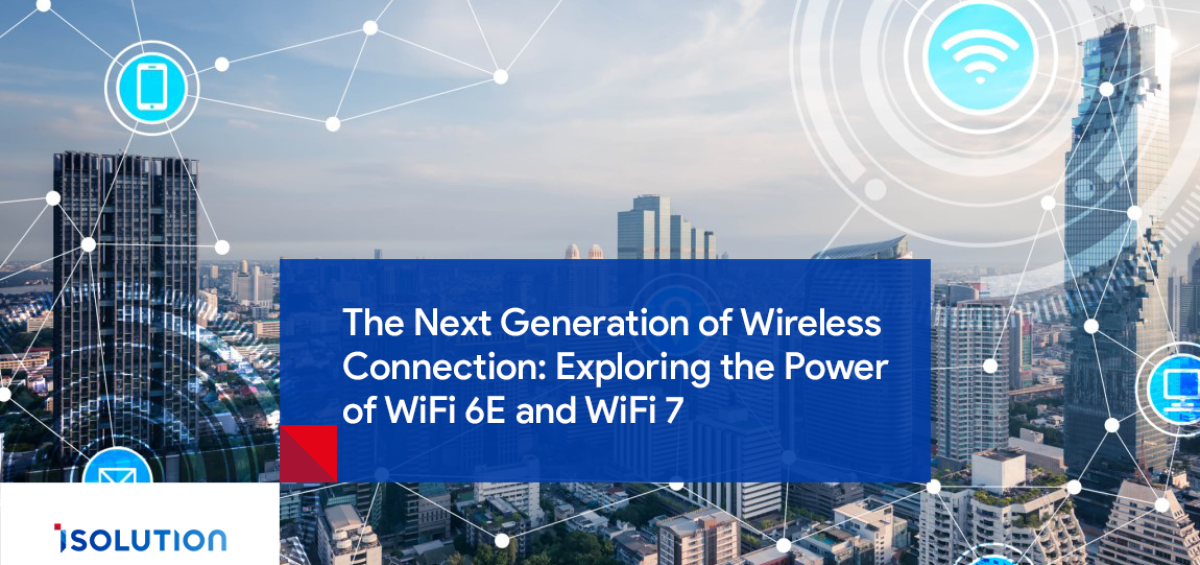In today’s rapidly evolving digital age, the demand for faster, more reliable wireless connectivity has reached unprecedented levels. WiFi 6E and WiFi 7 represent the next generation of wireless connection technologies that will revolutionize how we connect to the internet. These advancements promise unparalleled speed, reduced latency, and enhanced performance, paving the way for a more connected future. According to a recent report, The global WiFi market is projected to grow from $15.4 billion in 2020 to $26.2 billion by 2026, mainly driven by the adoption of WiFi 6E and WiFi 7 technologies.
In this article, we will dive into the next generation of wireless connection (WiFi 6E and WiFi 7), exploring their definitions, evolution, technical differences, benefits, challenges, and the future of wireless connectivity.
Evolution of Wireless Technology and Its Significance
Wireless technology has undergone significant transformations since the introduction of WiFi in the late 1990s. Each generation has brought substantial improvements in speed, capacity, and reliability. From WiFi 4’s 802.11n standard to WiFi 5’s 802.11ac, we have witnessed consistent advancements that meet the increasing demands of internet users. The latest iterations, WiFi 6, WiFi 6E, and the forthcoming WiFi 7, continue this trend, offering transformative capabilities that address the growing need for high-speed, low-latency connectivity.
What are WiFi 6E and WiFi 7?
-
WiFi 6E
WiFi 6E extends the capabilities of the WiFi 6 standard by utilizing the 6 GHz band. This addition offers increased bandwidth, reduced interference, and higher data transfer, making it a game-changer for wireless communication.
-
WiFi 7
WiFi 7, the standard expected during 2024, promises to push the boundaries even further. With anticipated speeds of up to 46 Gbps and advanced features like Multi-Link Operation (MLO) and 320 MHz channels, WiFi 7 is set to deliver unprecedented performance and efficiency.
Technical Differences Between WiFi 6E and WiFi 7
WiFi 6E
- Frequency Band: Operates in the 6 GHz band.
- Bandwidth: Up to 1,200 MHz of additional spectrum.
- Speed: Support for up to 7.2 Gbps.
- Latency: Lower latency for real-time applications.
WiFi 7
- Frequency Band: Utilizes 2.4 GHz, 5 GHz, 6 GHz bands, and potentially new bands.
- Bandwidth: 320 MHz channels.
- Speed: Up to 46 Gbps.
- Efficiency: Advanced modulation and Multi-Link Operation for improved traffic handling.
- Latency: Further reduced for real-time applications like AR/VR and 8K streaming.
Benefits of WiFi 6E
The primary benefits of WiFi 6E include better performance in dense environments, such as stadiums and conference centers, and support for more simultaneous connections. This makes it ideal for smart homes, IoT devices, and enterprise networks, ensuring smooth and uninterrupted connectivity.
Benefits of WiFi 7
WiFi 7’s potential benefits are immense. With speeds reaching up to 46 Gbps, users can expect seamless streaming of high-definition content, faster downloads, and improved performance for bandwidth-intensive applications. WiFi 7 will also enhance the capabilities of smart homes and IoT ecosystems, providing a robust foundation for future technological innovations.
Challenges and Considerations
-
Compatibility
Upgrading to WiFi 6E and WiFi 7 requires compatible devices and infrastructure. Older devices may not support these new standards, necessitating significant investment in new hardware.
-
Cost
The cost of upgrading to WiFi 6E and WiFi 7 can be substantial for both consumers and businesses. However, the long-term benefits in terms of performance and reliability make it a worthwhile investment.
-
Security
As with any new technology, ensuring robust security measures is crucial. WiFi 6E and WiFi 7 will need to address potential vulnerabilities to protect users’ data and privacy.
Future of Wireless Connectivity
-
Integration with 5G
The future of wireless connectivity lies in the integration of WiFi 6E, WiFi 7, and 5G networks. This combination will provide seamless, high-speed connectivity across various devices and applications, from mobile phones to smart home systems.
-
New Applications
Enhanced connectivity will enable new applications and services, driving growth in industries such as healthcare, education, and entertainment. For example, improved telemedicine capabilities, more immersive online learning experiences, and higher-quality streaming content are just a few possibilities.
-
Long-Term Impact
Looking ahead, the long-term impact of WiFi 6E and WiFi 7 will be profound. As our world becomes increasingly connected, the demand for faster, more reliable wireless solutions will continue to grow, driving continuous innovation in this field.
In general, WiFi 6E and WiFi 7 represent the next generation of wireless connection, offering unprecedented speed, reduced latency, and enhanced performance. These advancements will revolutionize how we connect to the internet, enabling new applications and services that were previously unimaginable. Stay informed about these technologies and consider upgrading your devices to take full advantage of the future of wireless connectivity.







Leave a Comment